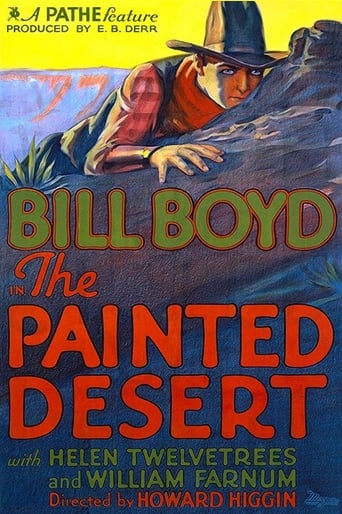GManfred
Two prospectors come across an abandoned covered wagon - abandoned, that is, except for a baby. They have a disagreement, one stays to raise the baby and the other leaves, leaving his partner holding the bag, er, baby. Fast forward twenty-odd years, and the baby grows up to be William Boyd. The two prospectors are deadly enemies, and the grown-up baby tries to bring them together. Added bonus; the one who left now has a pretty daughter, a development not lost on the boy.The story is fairly interesting and could have been more so if the movie hadn't been cannibalized and crucial scenes removed for other movies. Several reviewers have mentioned some scenes have been taken out and with them much of the excitement was drained from the film. In addition, the acting is slow and deliberate giving the movie an artificial, stilted feel and will catch modern audiences off balance. On the whole, though, it is worth a look due to the peculiar nature of the subject matter, and to see Clark Gable as a bad guy minus his customary charm, and William Boyd before he hit the bigtime as Hopalong Cassidy.
oldblackandwhite
The Painted Desert is best remembered as Clark Gable's first substantial role for good reason. The future King of Hollywood's natural, dynamic style of acting stands out in this extremely creaky early talkie Western. In an unrewarding heavy role Gable speaks in his trademark relaxed, cocky manner, while other, more experienced actors such as J. Farrell MacDonald, early silent era star William Farnum, and a stiff-as-a-board Bill Boyd deliver their lines one distinctly enunciated word at a time as if speaking toward a microphone hidden in a cactus. Admittedly Boyd wasn't much of an actor in spite of his good looks and sunny disposition, but MacDonald and Farnum were. Blame an under-financed sound department and uninspired direction by Howard Higgins, who also co-wrote the murky script for this lumbering oater. Those who would excuse the stiff direction and acting as caused by unavoidable problems with early sound equipment should first take a look at Joseph Von Sternberg's Morocco (1930), released the year before The Painted Desert, but showing a marvelously sophisticated and artistically pleasing use of sound. Other than Gable, the only other actors who managed to rise above the restraints of the over-compensating sound technicians and Higgin's stodgy direction were gorgeous leading lady Helen Twelvetrees and Boyd's beautiful white horse.That's not to say that The Painted Desert doesn't have some good points -- especially for die-hard Western fans. Most of the low, low budget must have been spent carting the actors, crew, and equipment around several scenic Arizona locations, including the sure-enough Painted Desert. Sets by art director Carrol Clark and costumes by Gwen Wakeling were well turned out and authentic looking. Oldblackandwhite, who is one of the vanishing breed of Texans still preferring the Stetson style to the ubiquitous Beaver Cleaver ball cap, wishes he could find the hatter Ms. Wakeling used for this picture. The sets and costumes, along with a folksy, real-to-life dialog, as plodding as the delivery was, gave the movie an authentically quaint, rustic 19th century ambiance missing in many a better produced Western.Best of all, and almost worth the price of a DVD -- a cheap one anyway -- was having a tense, climactic, sixgun showdown between two elderly gentlemen! But there wasn't much else to get excited about in The Painted Desert. Mainly for curiosity seekers, dedicated Clark Gable fans, fanatical Western aficionados, and the usual desperate insomniacs. Neither the best nor the worst from Old Hollywood's Classic Era.
zeppo-2
For a western, this is somewhat unusual in that there is almost no action. The wagons been destroyed all happens off-camera and the mine explosion has all the thrills of a bouncy castle. The climatic clash between hero and villain is just one quick punch in the face. Nobody gets hurts and the feel is of a Saturday morning cartoon from the 1970's, where no one was allowed to use any violent action of any type.It's evident that Gable was going to make it and Boyd's role is just a precursor of his Hopalong Cassidy films.Alright for it's time but the non-action,stilted dialogue, stiff acting and long pauses all make for a dull film that seems to go on far longer than it's short 79 minute running time.
space-13
Clark Gable's acting potential is evident in this cowboy film of feuding families. He's not sorry for his crimes, which makes him more interesting than everyone else in their complete predictability. Helen Twelvetrees, Our Heroine, seems like she's stepped right out of silent films into talkies without realizing the difference between them.


